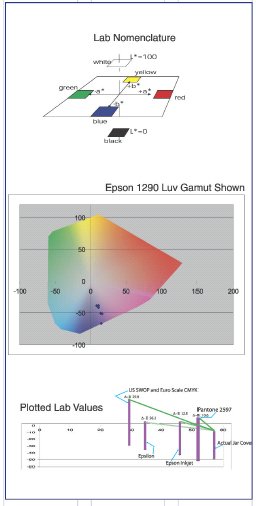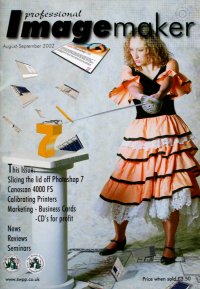articles/Printing/absolutepuzzle-page1
Absolute Puzzle - part 1 of 1 2 3 4
by Mike McNamee Published 01/08/2002

The process is actually fraught with difficulties and we estimate that there are at least 14 stages where things can go awry on the route from shoot through film, scanning and repro. To maintain a high level of accuracy, all parts must be controlled including the original lighting, processing, scanning, manipulation, conversion to CMYK, film making, plate making, press set-up, inking and last but not least the final viewing conditions. A digital workflow is similar (but not identical) and brings with it the responsibility for preparing an accurate image file.
The goal varies for different types of photography. For the social
photographer the best outcome is a print which is a pleasing colour, perhaps with a slightly flattering tan. For the medical photographer such an outcome could be completely wrong - they might be trying to show somebody with jaundice and want them to look slightly yellow!
Skin in Particular.
The reproduction of skin tones is the most important feature of people photography. Flesh is one of the known colours and we all know when it looks right. Push a little bit of green into a complexion and everybody is aware of the colour mismatch, you do not need to be a photographer to notice the error in the colour.

At the top of the diagram the layout of a Lab plot. In the middle, using the Cadbury Drinking Chocolate's purple as an example, the colour positions errors that each type of printer would create are shown. At the bottom the colour errors are annotated on the diagram.
Skin tones present a continuous series of colours from almost pure black to talcum powder white. However, because it is the absorption of light by haemoglobin and melanin which colours skin, the colours in between this black and white reside in the reddish brown area of the spectrum.
One of the best points of reference is the Macbeth Colour Checker. The first two patches in this chart are Dark Skin and Light Skin. They were selected to be lighter than the darkest and darker than the lightest human skin tones and provide a good point of reference.
McCamy et al, who first described the chart in 1976, chose brightness values of 38% and 66%. The NBS system of colouring calls the two shades Moderate Brown and Light Reddish Brown. In summary then, skin is a red brown colour, which varies continuously (in perceived brightness) from black and white.
When we try to define a colour for reproduction we frequently look at it in Photoshop (or some other imaging program). Here we have a choice of working colour spaces, consisting of Lab, RGB, CMYK and HSB. Of these, RGB, the baseline user's colour system for digital capture (and scanning), is actually the poorest for manipulating colour. The RGB values for skin tones are not the same in different RGB colour spaces and so the values for sRGB and Adobe RGB (1998) are different. Using the so-called additive colour space is also not very intuitive - yellow is made by mixing green and red and you have to add blue to make this mix lighter!
You are currently on page 1 Contact Mike McNamee
1st Published 01/08/2002
last update 09/12/2022 14:50:45
More Printing Articles
There are 0 days to get ready for The Society of Photographers Convention and Trade Show at The Novotel London West, Hammersmith ...
which starts on Wednesday 15th January 2025





